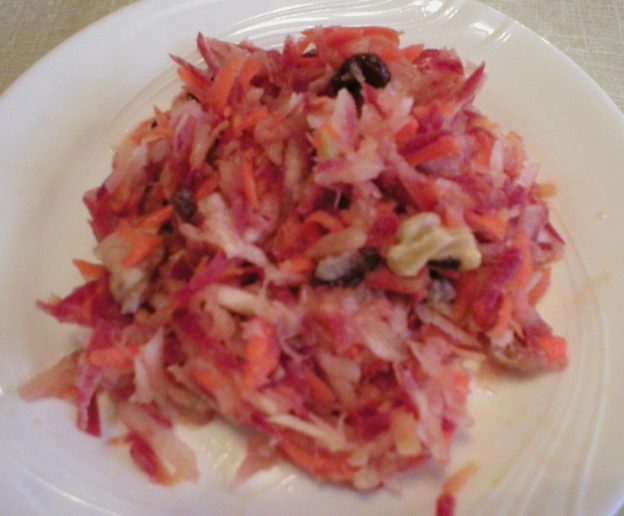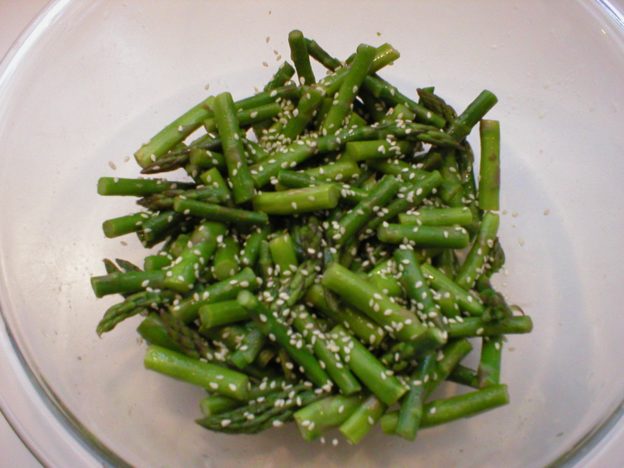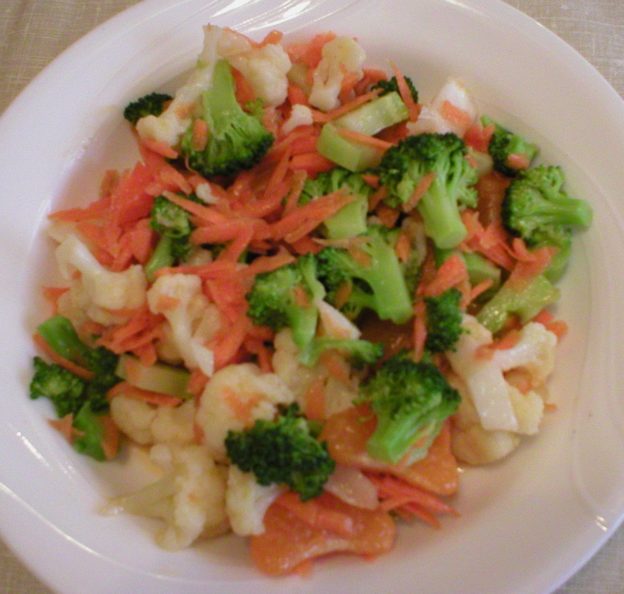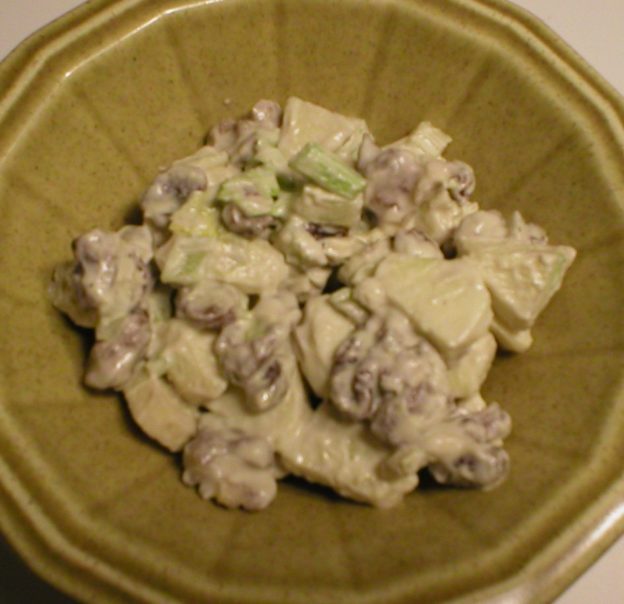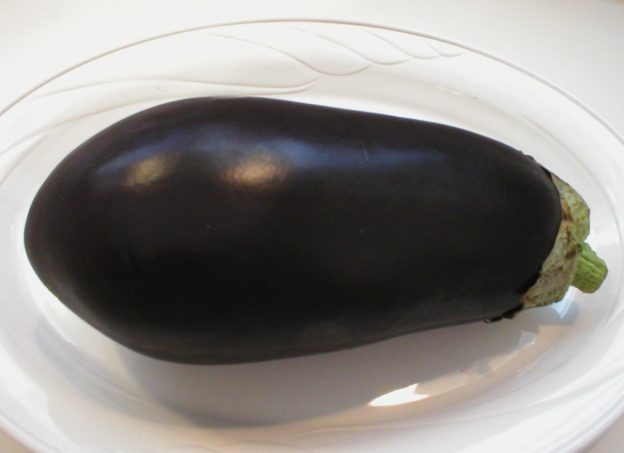If eggplant is new to you and you’re just not sure what to do with it, you’re in the right place! If you’re familiar with eggplant and are just looking for something a little different to do with it, you too are in the right place! My Eggplant 101 notes below cover everything from what it is, to how to select, store, freeze, and prepare eggplants, to what herbs, spices and other foods go well with them, along with cooking tips, ideas, and suggested recipes using eggplant. Enjoy!
I hope this helps!
Judi
Eggplant 101 – The Basics
About Eggplant
Eggplants are members of the nightshade (or Solanaceae) family, so they are cousins with tomatoes, bell peppers, and potatoes. They grow in a similar manner as tomatoes, on long vines producing hanging fruit. The flesh is glossy and usually deep purple in color, although other varieties can be lavender, jade green, orange, and yellow-white. The sizes of the different varieties can range from that of a small tomato, to a large, long zucchini, to a large oval teardrop, which is what we see most commonly in American grocery stores. The different varieties tend to have somewhat different textures and flavors when cooked ranging from very soft and creamy with a slight sweet flavor, to more meaty texture with a slight bitter flavor.
It appears that eggplant first grew wild in India, with cultivation beginning in China around 500 BC. From there it spread to Africa, then Italy, then eventually around the world. Because of its bitter nature, it was originally thought that eggplant caused insanity, leprosy and cancer. When it was first introduced to Europe, eggplant was used more as a decorative plant then as food. When newer varieties were cultivated with less bitterness, eggplant caught on more as a culinary delight. It is now an esteemed inclusion in the cuisines of Italy, Greece, Turkey, France, and beyond.
Nutrition Tidbits
Eggplant is noteworthy for its array of B-vitamins, fiber, copper, manganese, magnesium, potassium, folate, and Vitamin K. One cup of raw eggplant has only 20 calories.
Eggplants are high in the antioxidant nasunin, a type of anthocyanin, which is known to protect cells from harmful free radical damage. Some studies suggest that the antioxidants in eggplant may help to reduce our risk for heart disease by lowering LDL cholesterol and triglycerides. The fiber in eggplant may help to control blood sugar by slowing the rate of absorption. Limited research has shown that some of the compounds in eggplant may have cancer-fighting benefits.
How to Select Eggplant
Look for an eggplant that is firm and heavy for its size. The skin should be smooth, shiny, and have a deep color. Scars, bruises, and discoloration indicate older eggplants that may be decayed on the inside. If you gently press an indentation in the eggplant with your thumb and it springs back, the eggplant is ripe. If the indentation does not spring back, it is not ripe.
How to Store Eggplant
Eggplants are quite perishable. The optimal temperature for storing eggplant is 50-54°F. If you have someplace in your home at that temperature range, store it there. If your home is warmer than that (which is usually the case), store your eggplant loosely wrapped in a plastic bag (allowing some air to flow in and out) or crisper drawer in the refrigerator. Be sure to keep it away from ethylene-producing produce (such as apples, melons, avocados, bananas, and nectarines). Do not cut it until you are ready to use it.
How to Freeze Eggplant
Eggplant can be frozen, but the texture will be very soft when it is thawed. This would be fine if using it for dips, sauces or soups. For this purpose, eggplant can be water blanched in the traditional method. Wash and peel your eggplant and slice it or cut it into desired size pieces. Add ½ cup of lemon juice to 1 gallon of water. Bring to a boil and add the eggplant. Boil for 4 minutes, drain, then cool in ice water. Drain and place in air-tight freezer bags or containers.
Roasted eggplant can also be frozen. Wash the eggplant and poke some holes in it with a fork. Roast at 400°F until it collapses. Remove from oven and allow it to cool so it can be handled. Scoop out the pulp and place it in an air-tight freezer container to freeze.
If you plan to fry eggplant after removing it from the freezer, slice and blanch the eggplant. Then batter or bread it as if it were fresh. Freeze slices separately on a tray, then transfer them to air-tight freezer containers, separating layers with waxed paper.
Completely cooked dishes using eggplant can also be frozen. Freeze them in serving-size portions in appropriate air-tight containers.
Properly prepared eggplant can keep in the freezer for 6 to 8 months.
How to Prepare Eggplant
First wash the eggplant, then cut the ends off. Eggplant will turn dark quickly after being cut. To help prevent that or at least slow it down, sprinkle it with a little lemon juice.
Many people eat eggplant with the skin left on, while others opt to peel it first. Note that the skin of larger specimens and those with white skin will be tougher, so it is advisable to peel those. Slice or cut the eggplant into desired size pieces. To help reduce bitterness, salt both sides of cut slices and allow them to sit and “sweat” for about 20 minutes. Then rinse well and proceed with recipe. Note: Use salt sparingly in recipes when preparing eggplant that has been salted to sweat out the bitterness, in case not all of the salt was rinsed off. More salt can always be added later, but removing too much is a different story! Taste it along the way to be sure.
Cooking/Serving Ideas and Tips
Eggplant can be baked, roasted, steamed, fried, stuffed, grilled, pureed, used in casseroles and soups, and incorporated into a variety of ethnic cuisines.
Quick ideas and tips for using eggplant:
* Puree roasted eggplant with garlic, tahini, lemon juice, cumin, and olive oil for homemade Baba Ganoush, a Middle Eastern thick sauce or spread. (See link below for recipe.)
* Eggplant may be roasted whole. To do this, do not peel the eggplant. Pierce the skin several times with a fork to make vent holes to allow steam to escape. Bake at 400°F for 15 to 25 minutes, depending on its size. It is done when you can easily poke a fork or sharp knife in it, or when it collapses.
* Combine baked eggplant cubes with peppers, lentils, onions, and garlic then top with a balsamic vinaigrette.
* Eggplant is like a sponge, so it absorbs oil very quickly when pan-frying. To help minimize this, salt the cubed eggplant and let it rest in a colander for 30 minutes. Rinse well, then squeeze dry between two sheets of paper towel. Salting the eggplant will remove its moisture and pressing it will compact the eggplant making it meatier and less absorbent.
* The longer the eggplant is cooked, the softer it will become.
* To grill eggplant, cut off the stem end, then cut in 1½ inch-thick wedges. Grill until streaked with brown and tender when pierced (12 to 15 minutes).
Herbs/Spices That Go Well With Eggplant
Basil, bay leaf, capers, cardamom, chervil, cilantro, cinnamon, coriander, cumin, curry powder, dill, fennel seeds, fenugreek, garlic, ginger, lemongrass, mace, marjoram, mint, nutmeg, orange, oregano, paprika and smoked paprika, parsley, pepper, rosemary, saffron, sage, salt, savory, tarragon, thyme, and turmeric
Other Foods That Go Well With Eggplant
Proteins, Nuts, Seeds: Anchovies, beans, beef, cashews, chicken, chickpeas, eggs, lamb, lentils, nuts, peanuts and peanut sauce, pine nuts, pork, sausage, seitan, sesame seeds, shrimp, tahini, tofu, and walnuts
Vegetables: Artichoke hearts, arugula, bell peppers, bok choy, carrots, celery, chard, chiles, kohlrabi, mushrooms, olives, onions, potatoes, radicchio, scallions, shallots, spinach, sprouts, tomatoes, and zucchini
Fruit: Coconut, lemon, lime, orange, pomegranate, and raisins
Grains: Bread crumbs, bulgur, couscous, millet, noodles, pasta, polenta, quinoa, and rice
Dairy and Non-Dairy: Cheese (esp. mozzarella, Parmesan, ricotta), coconut milk, cream, milk, and yogurt
Other: Hoisin, honey, miso, oil (esp. olive, sesame), pesto, sake, soy sauce, stock (vegetable), tamari, and vinegar
Eggplant has been used in: African cuisines, Asian cuisines, Baba Ganoush, caponata, casseroles, Chinese cuisine, curries, eggplant Parmesan, eggplant rollatini, stuffed eggplant, French cuisine, gratins, Indian cuisine, Italian cuisine, Japanese cuisine, Mediterranean cuisines, Middle Eastern cuisines, Moroccan cuisine, moussaka, pasta dishes, pesto, pizza, ratatouille, risotto, salads, sandwiches, Southeast Asian cuisines, spreads, stews, stir-fries, tagines, and Thai cuisine
Suggested Flavor Combos:
Combine eggplant with…
Balsamic vinegar + basil + oregano
Balsamic vinegar + tomatoes + zucchini
Basil + ricotta + tomatoes
Bell peppers + garlic
Bell peppers + onions + tomatoes + zucchini
Cheese (mozzarella, Parmesan, ricotta) + tomatoes
Chickpeas + tomatoes + pomegranate molasses
Cucumbers + garlic + mint + yogurt
Dill + walnuts + yogurt
Feta cheese + mint
Garlic + ginger + scallions + sesame + sesame oil + soy sauce
Garlic + lemon + olive oil + tahini
Garlic + Parmesan cheese + parsley + ricotta + tomatoes
Garlic + tomatoes + zucchini
Herbs + lemon juice + olive oil
Pasta + pesto + ricotta + walnuts
Recipe Links
The Original Arabic Moutabal (Baba Ganoush) https://maninio.com/the-original-arabic-moutabal-baba-ganoush-middle-east-vegan/
Vegetarian Baked Eggplant “Meatballs”
https://thefreerangelife.com/baked-eggplant-balls/
50+ Delicious Eggplant Recipes for Every Taste https://thefreerangelife.com/eggplant-recipes/
Spicy Garlic Oven Roasted Eggplant Slices https://www.melaniecooks.com/spicy-garlic-roasted-eggplant/
12 Eggplant Recipes That Prove There is Life Beyond Eggplant Parm https://www.thekitchn.com/12-eggplant-recipes-that-prove-there-is-life-beyond-eggplant-parm-232650
18 of the Easiest-Ever Eggplant Recipes https://www.realsimple.com/food-recipes/recipe-collections-favorites/popular-ingredients/easy-eggplant-recipes
Eggplant and Black Bean Casserole https://producemadesimple.ca/eggplant-and-black-bean-casserole/
Eggplant Dip (Baba Ganoush) https://producemadesimple.ca/eggplant-dip-baba-ganoush/
Eggplant Stackers https://producemadesimple.ca/eggplant-stackers/
Resources
http://www.whfoods.com/genpage.php?tname=foodspice&dbid=22
https://www.healthline.com/nutrition/eggplant-benefits
https://thefreerangelife.com/how-to-store-eggplant/
https://www.hgtv.com/outdoors/gardens/garden-to-table/freezing-eggplant
https://producemadesimple.ca/eggplant/
Page, Karen. (2014) The Vegetarian Flavor Bible. New York, NY: Little, Brown and Company.

